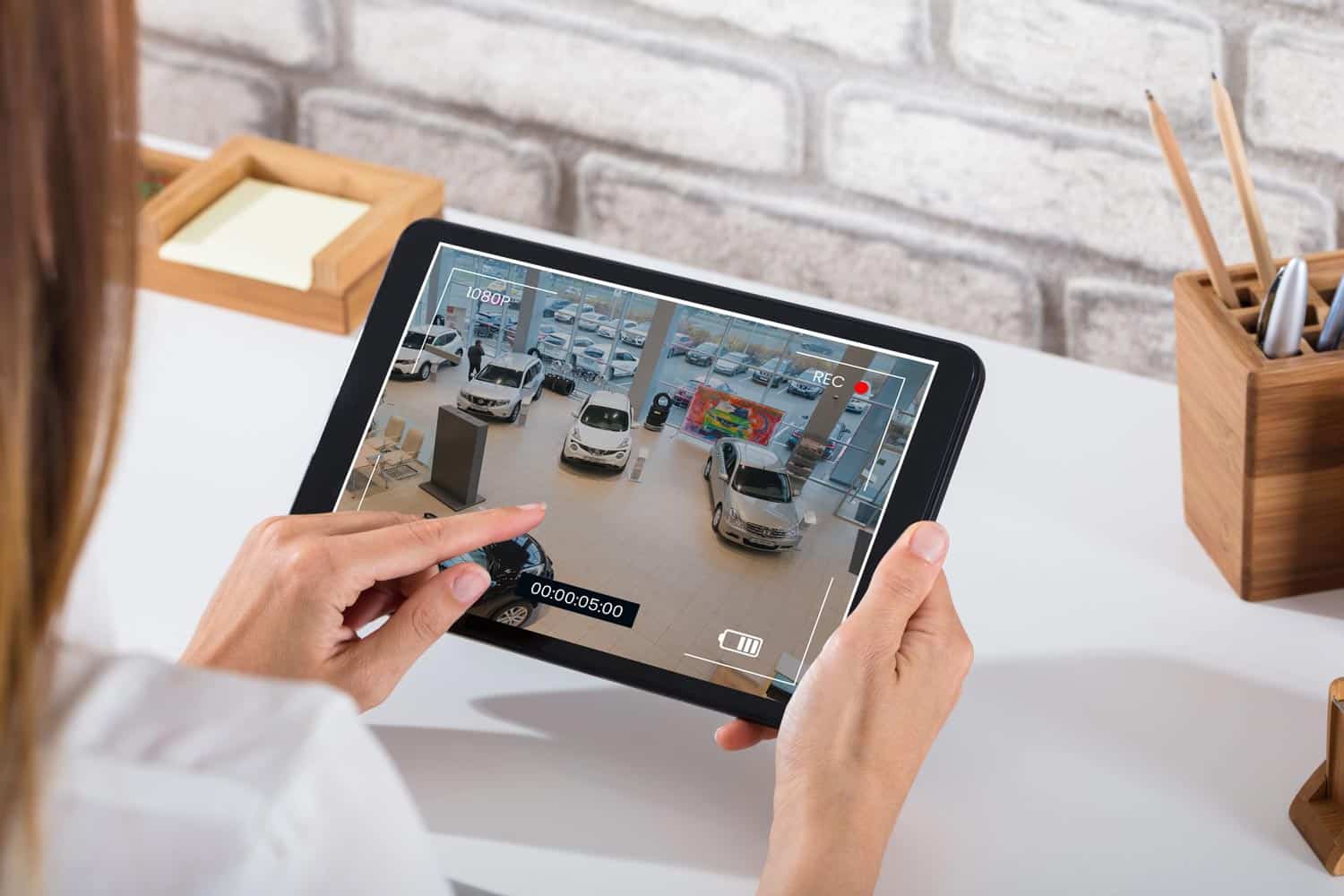There is no “one size fits all” security solution. Every security system should be designed and implemented to fit the unique challenges inherent to your business. To find yours, you should consult an expert security camera system buying guide.
That’s why we made this interactive security quiz. After answering a few quick questions, we will instantly give you our professional recommendation. Our system does this by taking all of your answers into account to give you a customized security plan specifically tailored for your business.
Security Camera System Buying Guide
The first step in any surveillance camera buying guide should be to ask yourself basic questions such as:
What geographic areas do I need to cover?
 First, consider the size of the area. The amount of ground you have to cover will change both the number of cameras you’ll use and the features you’ll want these cameras to have. For example, the size of the lens matters if you’re trying to cover large spaces.
First, consider the size of the area. The amount of ground you have to cover will change both the number of cameras you’ll use and the features you’ll want these cameras to have. For example, the size of the lens matters if you’re trying to cover large spaces.
Large parking garages, car lots, and warehouses often have a lot of ground to cover. The placement of cameras and their lens and sensor size matter. You must also decide if a fixed lens, which doesn’t allow zooming, will work. A zoom lens allows you to see distances more clearly. But if the camera is placed in a small, well-lit room, you may not need a special lens.
Do I need wired or wireless cameras?
This is a question that ties into two things: 1) Your budget and 2) Your geographic area. Wired cameras often loop into a closed system, otherwise called CCTV. But running wiring across big spaces can be cost-prohibitive.
Companies have the option of selecting wireless cameras to capture footage. Wireless cameras are more flexible in terms of placement. They’re good for large warehouses, parking lots, or other big geographic areas. They also have the ability to run solely off of solar power, meaning you will be online regardless of your property’s access to power.
Can I access my camera online?

No CCTV camera buying guide would be complete without considering issues surrounding outdoor security. Here’s what you should consider.
An Outdoor Security Solution
Securing the perimeter of your property is just as important as running cameras on the inside. But outdoor security camera design has its own set of questions to consider. For example:
What if my site doesn’t have electricity?
Wireless cameras with batteries can be used in areas without electricity. These cameras can also be powered by a solar panel. The benefits of these features are obvious for remote agricultural settings, gas and oil installations, or even a sprawling car lot where it’s not feasible to run cabling.
You can save battery life with these cameras by leveraging motion detection recording; this means the camera only powers up when motion is detected. Modern cameras can also send a push notification through a wireless internet connection that pings your phone with an alert when a matter needs your attention.
What are my options for low-light areas?
Both thermal and infrared cameras help with low light areas. If your location is well lit, you may not need these features. This could be outdoors, or it could be a darker corner of a storage facility. But do you need a thermal camera or an infrared camera?
Thermal imaging cameras sense differences in heat signatures. These are displayed on a monitor as black (cold) or white (hot). In contrast, an infrared camera gives you what would stereotypically be called “night vision.” These cameras use short wavelength infrared light to peer into the dark. Since crime is more prone to occur under the cover of darkness, having either a thermal or infrared camera can be key.
How hardened does my camera need to be for the weather?
The answer depends upon the location of the camera. Look for weather hardening features that fit where you’re placing the camera and your unique climate challenges. For example, do you have ice, sleet and snow in the yearly winter forecast? Will the camera be protected up under your roofline? Or will the camera be out in the baking sun in desert conditions? What about windy conditions?
All of these challenges can disrupt the functioning of your cameras. If you have a powered motion camera, ice can disrupt the panning feature of the lens, for example. In these instances, you can install cameras with heating elements that ensure it never drops below a certain temperature.
Weather–proof cameras are built rugged to withstand a lot of the harsh weather nature can toss our way. There is less risk to these cameras. Weather-proof camera housings help manage dust and rainy conditions. The more protection you provide the better.
We also recommend IP camera health and equipment monitoring. Pro-Vigil offers this service for worry-free operation of your surveillance system. This service monitors the health of your cameras remotely to ensure their operational effectiveness.
What’s Next?
These are just some of the guiding questions that go into a security assessment conducted by the Pro-Vigil team. Each security camera system is unique to the business it protects. There are so many options for the perfect CCTV camera system.
It takes the expert guidance of an experienced team to come up with the best configuration for the lowest costs that provides the security you need. Isn’t it time you started the conversation with the nation’s leading experts on video surveillance? Click here to take our online quiz now and find out how we can help your business.











